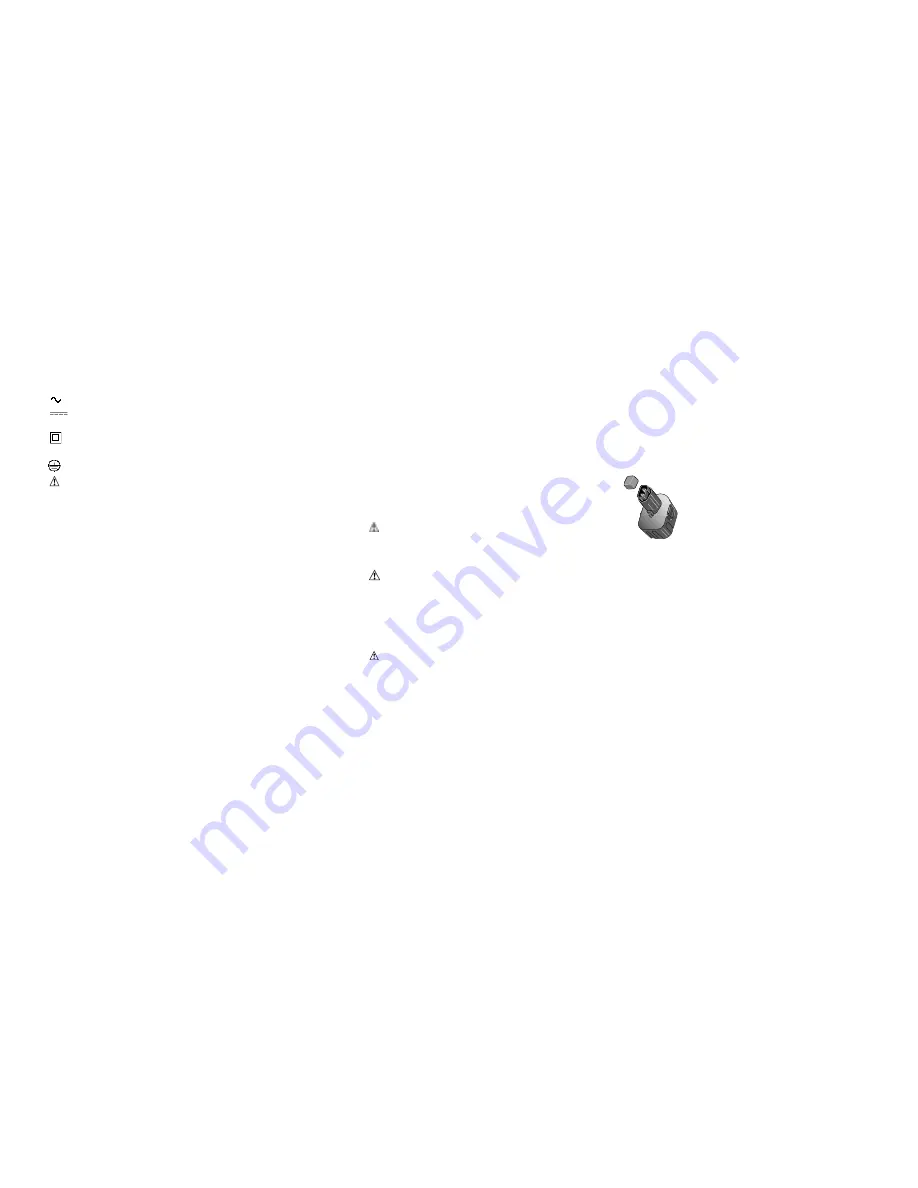
2
•
Avoid prolonged contact with dust from power sanding,
sawing, grinding, drilling, and other construction activities.
Wear protective clothing and wash exposed areas with
soap and water. Allowing dust to get into your mouth, eyes, or
lay on the skin may promote absorption of harmful chemicals.
• The label on your tool may include the following symbols.
V....................volts
A....................amperes
Hz..................hertz
W ..................watts
min ................minutes
................alternating current
..............direct current
no ..................no load speed
..................Class II Construction
…/min............revolutions or reciprocation per minute
..................earthing terminal
..................safety alert symbol
Important Safety Instructions for
Battery Packs
The battery pack is not fully charged out of the carton! First read
the safety instructions below. Then follow charging notes and pro-
cedures.
READ ALL INSTRUCTIONS.
•
Do not incinerate the battery pack even if it is severely
damaged or is completely worn out.The battery pack can explode
in a fire.
•
A small leakage of liquid from the battery pack cells may occur
under extreme usage or temperature conditions. This does not
indicate a failure. However, if the outer seal is broken and this
leakage gets on your skin:
a.
Wash quickly with soap and water.
b.
Neutralize with a mild acid such as lemon juice or vinegar.
c.
If battery liquid gets into your eyes, flush them with clean water
for a minimum of 10 minutes and seek immediate medical attention.
(Medical note: The liquid is 25-35% solution of potassium
hydroxide.)
•
Do not carry extra battery packs in aprons, pockets, or tool
boxes along with other metal objects. Battery pack could be short
circuited causing damage to the battery pack and possibly causing
severe burns or fire.
•
Charge the battery packs only in D
E
WALT chargers.
•
NOTE: The batteries in your battery pack are the nickel–cadmium
type. Cadmium is considered to be a toxic material by the
Environmental Protection Agency. Before disposing of damaged or
worn out Nickel–Cadmium battery packs, check with your state
Environmental Protection Agency to find out about special
restrictions on the disposal of these battery packs or return them to
a D
E
WALT certified service center for recycling.
•
DO NOT store or use the tool and battery pack in loca-
tions where the temperature may reach or exceed
105°F (such as outside sheds or metal buildings in sum-
mer).
CAUTION: Some tools with large battery packs will
stand upright on the battery pack but may be easily
knocked over. When not in use, place tool on its side on a stable
surface where it will not cause a tripping or falling hazard.
DANGER: Never attempt to open the battery pack for any
reason. If battery pack case is cracked or damaged, do not insert
into charger. Danger of electric shock or electrocution. Damaged
battery packs should be returned to service center for recycling.
NOTE: Battery storage and carrying caps are provided for use
whenever the battery is out of the tool or charger. Remove cap
before placing battery in charger or tool.
WARNING: Do not store or carry battery so that metal
Summary of Contents for DW970
Page 1: ......







































